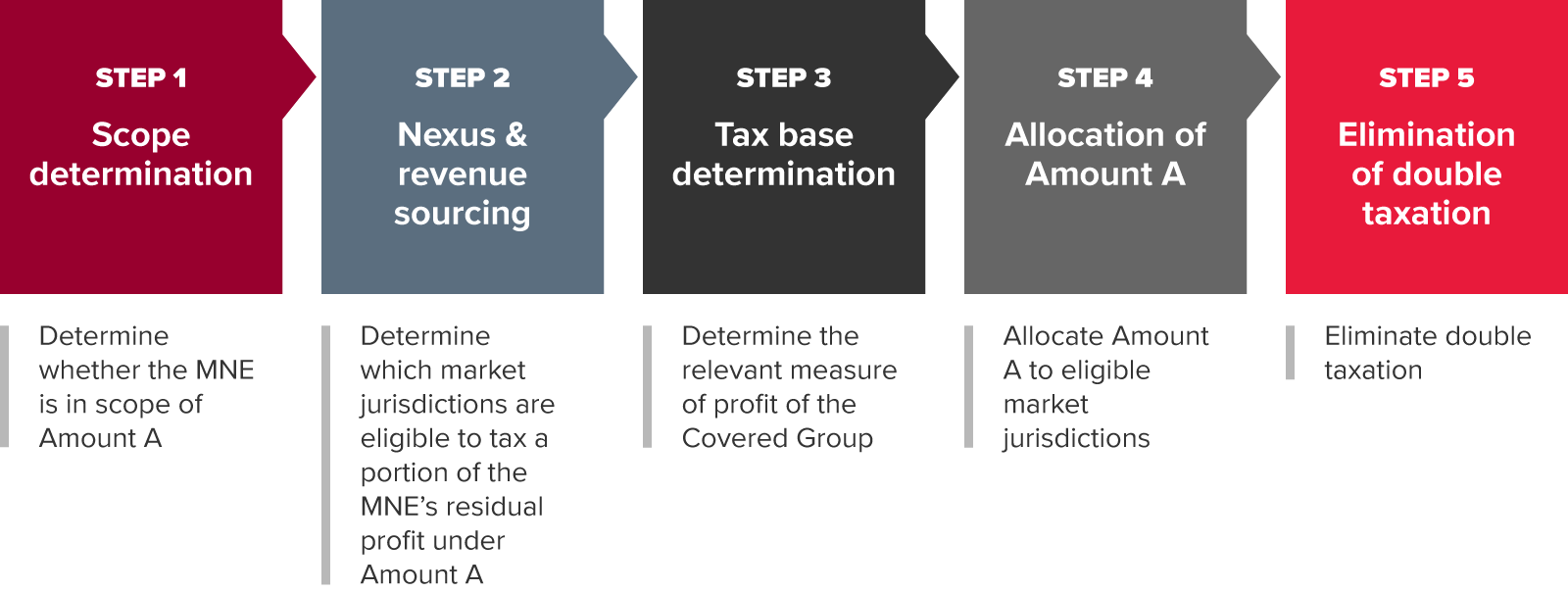Pricing matrix
MNE groups in scope of Amount B must determine the industry grouping, based on the product being distributed by the tested party, and the factor intensity classification based on the operating expense intensity and net operating asset intensity (OAS).
Based on the industry grouping and operating asset intensity, the pricing matrix below is used to determine the return of sales for the tested party.
| Industry Grouping | Industry Grouping 1 | Industry Grouping 2 | Industry Grouping 3 |
| Factor Intensity |
|
|
|
| (A) OAS 45% or more, any level of OES | 3.50% | 5.00% | 5.50% |
| (B) OAS 30% to 44/99%, any level of OES | 3.00% | 3.75% | 4.50% |
| (C) OAS 15% to 29.99%, any level of OES | 2.50% | 3.00% | 4.50% |
| (D) OAS less than 15%, OES 10% or more | 1.75% | 2.00% | 3.00% |
| (E) OAS less than 15%, OES less than 10% | 1.50% | 1.75% | 2.25% |
The pricing matrix produces a range of +/- 0.5%, eg “Factor Intensity 2, Industry Grouping 2” provides a range of 2.5% - 3.5%.
Operating expense cross check
The operating expense cross check operates as an overlay to the return on sales % applicable above. This operates whereby a further calculation is required, which uses the current year only to calculate an equivalent return on operating expenses using the return on sales under the pricing matrix.
Cap and collar rates apply to the operating asset intensity calculations performed in determining where the tested party sits within the pricing matrix. Where the tested party is based in a qualifying jurisdiction, alternative cap and collar ranges apply for the operating asset intensity result.
Under the operating expense cross check, comparisons are required between the equivalent return on operating expenses calculated above against the cap and collar. Where the cap and collar are triggered, an adjustment is required.
Data availability mechanism
Where the tested party is in a qualifying jurisdiction, a calculation is required on the adjusted return on sales under the data availability mechanism. The adjustment is made by reference to the sovereign credit rating of the qualifying jurisdiction.

